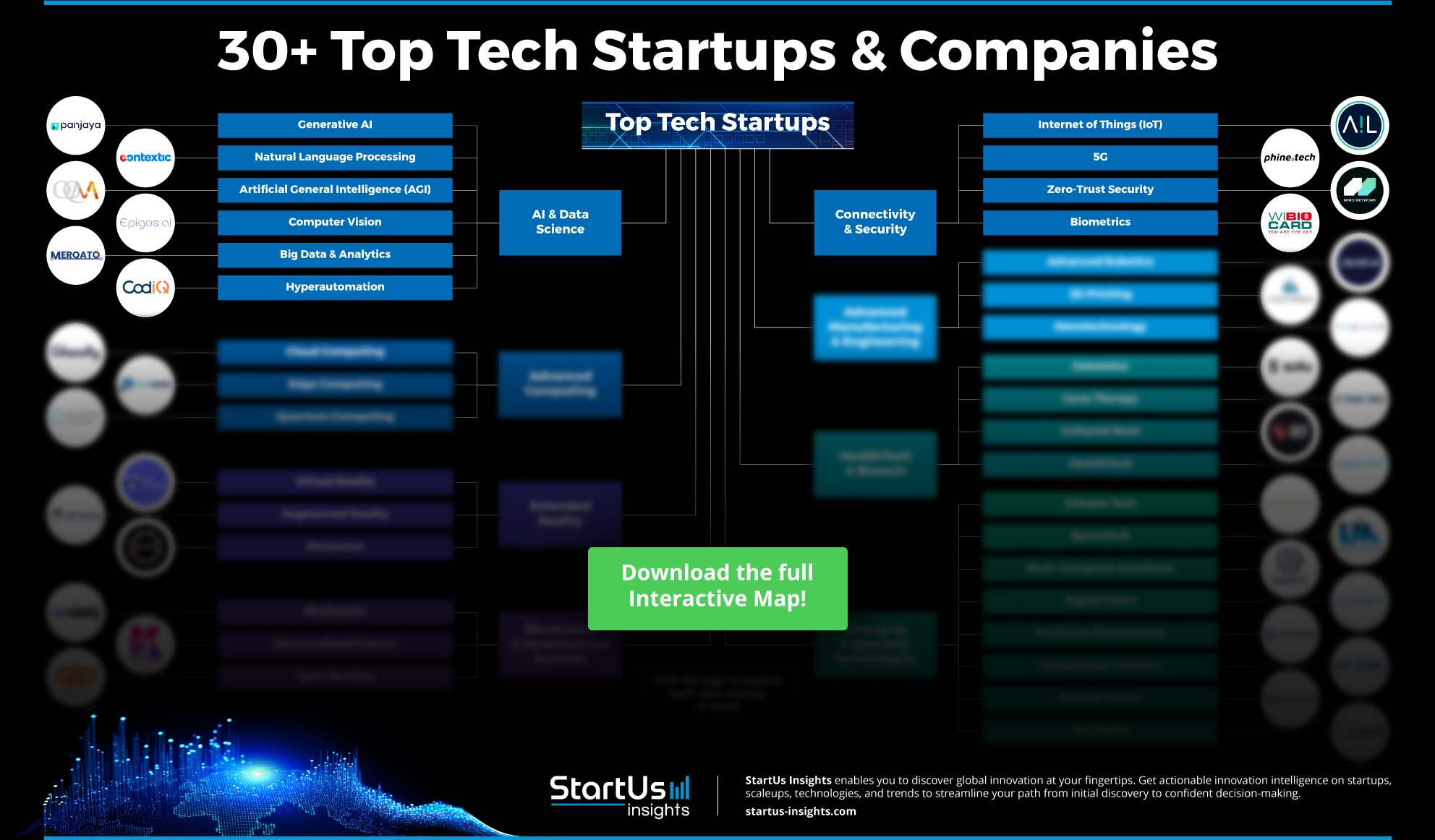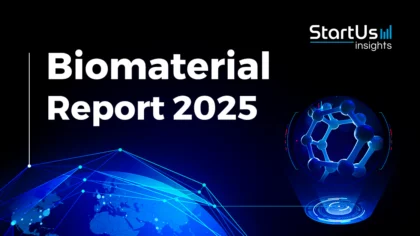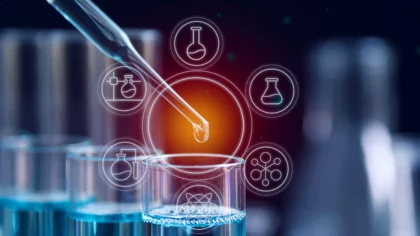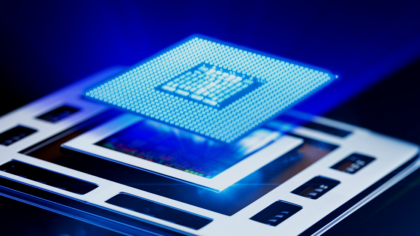Nanotechnology improves material science by enabling precise manipulation at the nanoscale to enhance functionality across industries. Recent innovations that define the future of nanotechnology include advanced nanomaterials like graphene and carbon nanotubes, which offer superior strength, conductivity, and flexibility for applications in electronics, construction, and aerospace. Further, nanomedicine enables targeted drug delivery systems and real-time diagnostics through nanoparticle carriers and biosensors to improve healthcare precision.
In energy industry, nanoscale materials improve the efficiency of solar cells and batteries. Moreover, developments like nano-coatings provide enhanced durability, self-healing properties, and antimicrobial features As nanotechnology grows, the future of nanotechnology enhances manufacturing, sustainability, and medical treatments for enhancing efficiency, performance, and innovation across sectors.
Why should you read this report?
- Gain insights into the top 10 technologies impacting nanotechnology
- Learn about three practical use cases for each technology
- Meet 10 innovative startups advancing these technologies

Key Takeaways
- Advanced Microscopy and Imaging
- Use Cases:
- Nanoparticle Characterization
- Nanoscale Electronics Failure Analysis
- Biological Imaging
- Startup to Watch: BioCubic
- Use Cases:
- Molecular Nanotechnology
- Use Cases:
- Medical Diagnostics Nanomachines
- Artificial Enzymes
- Nanorobots
- Startup to Watch: MolCube
- Use Cases:
- Computational Nanotechnology
- Use Cases:
- Nanostructure Design
- Nanoparticle Toxicity Testing
- Quantum Computing
- Startup to Watch: C12
- Use Cases:
- Carbon Nanomaterials
- Use Cases:
- High-Strength Composite Materials
- Water Purification
- Energy Storage
- Startup to Watch: TrimTabs
- Use Cases:
- Semiconductor Nanodevices
- Use Cases:
- Nanoscale Lasers
- Photovoltaic Cells
- Neuromorphic Chips
- Startup to Watch: Aeluma
- Use Cases:
- Nanocomposites
- Use Cases:
- Anti-Corrosion Coatings
- Wear Resistant Coatings
- Lightweight Construction Materials
- Startup to Watch: Silpara Technologies
- Use Cases:
- Nanosensors
- Use Cases:
- Wearable Health Monitors
- Industrial Safety
- Smart Agriculture
- Startup to Watch: Nanodecal
- Use Cases:
- Nanofilms
- Use Cases:
- Antimicrobial Coatings
- Energy-Efficient Windows
- Thermal Barrier Coatings
- Startup to Watch: Hynts
- Use Cases:
- Nanofluidics
- Use Cases:
- Lab-on-a-Chip Devices
- Biomolecule Separation
- Fuel Cells
- Startup to Watch: Hekat
- Use Cases:
- Nanophotonics
- Use Cases:
- Solar Energy Harvesting
- Plasmonic Sensors
- Optical Data Transmission
- Startup to Watch: Cooling Photonics
- Use Cases:
What You Need to Know About Nanotechnology
What are emerging technologies in nanotechnology?
- Nanotherapeutics enhance precision drug delivery and regenerative medicine.
- Nano-biosensors enable rapid diagnostics for health and safety.
- Spintronics offers advancements in memory storage and faster, more efficient electronic devices.
- Plasmonic nanostructures improve photonic circuits and imaging.
- Nanocoatings and nanocomposites enhance surface properties like anti-corrosion and UV resistance while benefiting industries such as automotive and aerospace.
- In energy, nanostructured supercapacitors and solid-state batteries improve charging times and energy density.
How will nanotechnology affect the future?
Nanotechnology will advance various sectors in the coming years to offer innovation and efficiency. For instance, in healthcare, it enhances disease detection and treatment through targeted drug delivery systems that minimize damage to healthy tissues and improve patient outcomes. In the energy sector, nanostructured materials improve solar panel performance, increase battery energy density, and enhance hydrogen fuel cell efficiency.
Additionally, advancements in nanoelectronics lead to the miniaturization of components, enabling faster devices and better display technologies through quantum dots. Environmental benefits from nanotechnology include the creation of advanced materials for pollution control and water purification to improve filtration capabilities and catalyst efficiency. In agriculture, nanosensors provide precision farming by monitoring soil conditions and crop health for targeted application of fertilizers and pesticides while maximizing yield.
Where is this Data from?
StartUs Insights provides data through its comprehensive Discovery Platform, which covers 4.7+ million startups, scaleups, and tech companies globally, as well as 20K+ emerging technologies & trends. The platform excels in startup and technology scouting, trend intelligence, and patent searches, offering a detailed view of the innovation landscape. For this report, we analyzed technologies within specific industries using the trend intelligence feature. During this research, we identified patterns and trends, pinpointing relevant use cases and the startups developing solutions for each. More capabilities and details are available at StartUs Insights Discovery Platform.
10 Emerging Technologies Impacting the Future of Nanotechnology [2025 & Beyond]
1. Advanced Microscopy and Imaging
Advanced microscopy and imaging techniques understand and manipulate materials at the nanoscale. Technologies such as scanning electron microscopy (SEM), transmission electron microscopy (TEM), and atomic force microscopy (AFM) allow for minute visualization of structures and phenomena. In surface morphology studies, SEM achieves resolutions below 1 nm, while TEM allows for insights into the internal structures and properties of nanoparticles. AFM provides imaging and measurement of surfaces at the atomic level for analysis of various materials’ mechanical and electrical properties.
3 Practical Use Cases of Advanced Microscopy & Imaging in Nanotechnology
- Nanoparticle Characterization: Advanced microscopy techniques enable the characterization of nanoparticles by providing detailed images and information about their size, shape, and surface properties. This assists in understanding the interaction of nanoparticles to enhance product development in pharmaceuticals, electronics, and materials science. Also, it improves quality control and optimizes performance in end-use applications.
- Nanoscale Electronics Failure Analysis: SEM analyzes nanoscale electronic devices to identify failure mechanisms in integrated circuits and other electronic components. As a result, this insight develops reliable electronic devices to increase performance and lifespan. Also, it increases the efficiency and cost-effectiveness of semiconductor manufacturing.
- Biological Imaging: The technology visualizes cellular structures and processes at the nanoscale to study interactions within living cells in real time. It assists in understanding disease mechanisms and developing targeted therapies to enhance the accuracy of research findings and develop medical treatments.
Startup to Watch: BioCubic
US-based startup BioCubic develops LS AFM technology that improves advanced atomic force microscopy capabilities for life science applications. It operates by integrating with inverted optical microscopes to enable correlative imaging of cells and biomaterials in both dry and liquid environments. It features a closed-loop XY scanner for precise positioning, a liquid scanner for sample examination, and a top-view video microscope to offer alignment and probe approach. Additionally, the LS AFM includes scanning modes such as vibrating and non-vibrating to adapt to different imaging techniques. By combining high-resolution imaging with software, the LS AFM measures and analyzes biomaterials at the nanoscale to provide insights into biological processes and material properties.
2. Molecular Nanotechnology
Molecular nanotechnology designs and constructs materials and devices at the molecular scale. It encompasses techniques such as mechanosynthesis for the assembly of nanoscale structures from molecular building blocks to alter the engineering of materials. For instance, DNA nanotechnology creates complex nanostructures through self-assembly, while nanoscale robots and nanomachines provide advancements in manufacturing and medicine. It manipulates matter to identify physical, chemical, and biological properties for applications across industries, including healthcare, electronics, and energy.
3 Practical Use Cases of Molecular Nanotechnology
- Medical Diagnostics Nanomachines: Molecular nanotechnology develops nanomachines capable of performing specific diagnostic functions within the human body, allowing for real-time monitoring of biological markers. These advancements improve the accuracy and efficiency of medical diagnostics, leading to earlier detection of diseases and more personalized treatment plans.
- Artificial Enzymes: The technology replicates natural enzymatic processes with higher efficiency and specificity. It assists industries such as pharmaceuticals and biotechnology by enabling more effective drug development and production processes to lower costs and improve therapeutic outcomes.
- Nanorobots: Through precise imaging techniques, researchers develop nanorobots for targeted drug delivery and complex surgical procedures at the cellular level. Thus, it minimizes damage to surrounding tissues and maximizes the therapeutic effect of treatments to enhance patient safety and recovery times in medical applications.
Startup to Watch: MolCube
South Korean startup MolCube develops a computational platform that offers solutions for modeling and simulating complex biomolecular and material systems to advance drug and material discovery. Its MolCube-Builder technology creates intricate models and generates simulation inputs without third-party software, available as a web server or for local installation. The MolCube-Simulator offers job submission and management across designated cloud systems, while the MolCube-Analyzer provides tools for analyzing simulation trajectories efficiently. The company’s solutions feature include support for force fields such as chemistry at harvard molecular mechanics (CHARMM), assisted model building with energy refinement (AMBER), and Martini 3. Also, it assists with reading and modeling protein data bank (PDB) formats, ligands, and nonstandard residues.
3. Computational Nanotechnology
Computational nanotechnology uses technologies such as molecular dynamics simulations and quantum mechanical calculations to predict the behavior of nanostructures. Further, ML algorithms enhance the design and optimization of nanomaterials to discover compounds with tailored properties. Additionally, tools like nanoelectromechanical systems (NEMS) and advanced software platforms enable control of mechanical and electrical functions for applications in high-frequency sensors, actuators, and molecular transducers.
3 Practical Use Cases of Computational Nanotechnology in Nanotechnology
- Nanostructure Design: Computational nanotechnology models and predicts the behavior of nanoscale materials under various physical and chemical conditions. It simulates the performance of different nanostructures to enable the design of improved catalysts that enhance chemical reactions or nanocarriers optimized for targeted drug delivery systems in healthcare.
- Nanoparticle Toxicity Testing: This technology simulates nanoparticle interactions with biological systems at the molecular level. By predicting the coordination of nanoparticles within cells, tissues, or entire organisms, researchers assess potential toxicity and safety profiles before physical testing. As a result, it ensures regulatory compliance, provides safer nanomaterial designs for pharmaceuticals and consumer products, and reduces risks to human health and the environment.
- Quantum Computing: It models the quantum states of nanoscale materials to understand their properties for the development of efficient qubits. It enhances the computational power of quantum computers by offering improvements in complex problem-solving across fields like cryptography, materials science, and system optimization.
Startup to Watch: C12
French startup C12 develops quantum hardware built on carbon nanotubes. The company utilizes isotopically pure carbon nanotubes, grown atom by atom via chemical vapor deposition, to keep only the 12C isotope to suppress noise from nuclear-electron spin coupling. It integrates these nanotubes onto silicon chips through a nano-assembly process to create quantum circuits that maximize qubit isolation from environmental interference and reduce decoherence. Its features include a high-connectivity microwave resonator that links all qubits and builds communication between them and a scalable design that produces qubits.
4. Carbon Nanomaterials
The technologies in carbon nanomaterials include carbon nanotubes (CNTs), graphene, and fullerenes to offer exceptional strength, conductivity, and surface area. The synthesis of these materials employs various techniques, such as chemical vapor deposition (CVD), laser ablation, and arc discharge for large-scale production with controlled properties. They assist advanced materials science, energy storage solutions, and environmental remediation to enhance performance and functionality like mechanical strength, electrical and thermal conductivity, and chemical reactivity.
3 Practical Use Cases of Carbon Nanomaterials in Nanotechnology
- High-Strength Composite Materials: Utilizing carbon nanomaterials such as CNTs and graphene enhances the mechanical properties of composite materials by improving their strength and durability. Thus, it develops lighter and more resilient materials for use in industries like aerospace and automotive for better fuel efficiency and performance.
- Water Purification: The properties of carbon nanomaterials enable their application in advanced water purification systems, where they effectively adsorb contaminants and harmful substances. It promotes cleaner water sources and supports environmental sustainability to provide solutions for water treatment and management.
- Energy Storage: Carbon nanomaterials improve the performance of batteries and supercapacitors by increasing their charge capacity and reducing charge-discharge times. As a result, this develops more efficient energy storage systems for the transition to renewable energy sources and the improvement of the overall energy efficiency of electronic devices.
Startup to Watch: TrimTabs
UK-based startup TrimTabs converts waste plastic into high-quality CNTs using an enhanced version of chemical vapor deposition (CVD). The company converts different types of plastic feedstocks into these CNTs while generating hydrogen as a clean energy byproduct. It also synthesizes ultra-long single-walled nanotubes and nanotubes with nitride groupings to scale up production. This way, the company minimizes environmental impact by recycling waste plastics and producing hydrogen.
5. Semiconductor Nanodevices
Semiconductor nanodevices manipulate electronic properties at the nanoscale. For instance, modern electronic circuits use field-effect transistors (FETs), particularly complementary metal-oxide-semiconductor (CMOS) devices. Additionally, high-electron mobility transistors (HEMTs) and tunneling FETs (TFETs) improve device performance to provide faster speeds and lower power consumption. Further, the integration of two-dimensional materials, such as transition metal dichalcogenides (TMDs) and graphene, enhances the capabilities of semiconductor nanodevices by enabling functionalities and scaling down device dimensions. Also, the development of new fabrication techniques, including CVD and atomic layer deposition (ALD) offers precise control over material properties and device architectures for electronics and optoelectronics.
3 Practical Use Cases of Semiconductor Nanodevices in Nanotechnology
- Nanoscale Lasers: Semiconductor nanodevices develop nanoscale lasers by utilizing quantum well structures to produce light at small dimensions. It finds applications in telecommunications and medical devices to enhance data transmission speeds and improve laser precision in surgical procedures.
- Photovoltaic Cells: In photovoltaic cells, semiconductor nanodevices enhance the efficiency of solar energy conversion through the integration of nanostructured materials that improve light absorption and electron mobility. As a result, this allows the usage of solar power as an alternative energy source, reduces reliance on fossil fuels, and lowers greenhouse gas emissions.
- Neuromorphic Chips: By mimicking the neural architecture of the human brain, semiconductor nanodevices create neuromorphic chips for efficient processing of sensory data and complex computations. It advances AI and ML applications to provide faster processing speeds and improved energy efficiency in computing systems.
Startup to Watch: Aeluma
US-based Aeluma develops a process that integrates high-performance compound semiconductor nanomaterials with silicon manufacturing techniques to produce cost-effective and high-performing semiconductors. The company’s technology provides advancements in AI, augmented reality (AR)/virtual reality (VR), and the electrification of vehicles without reducing performance. It benefits various industries including mobile devices, machine vision, robotics, defense, and telecommunications to enhance the capabilities of devices.

6. Nanocomposites
Nanocomposites involve a matrix, such as polymers, ceramics, or metals, infused with nanomaterials like CNTs, graphene, and silica nanoparticles. These components improve mechanical strength, thermal stability, and electrical conductivity to develop lightweight and strong materials. Techniques for synthesizing nanocomposites include sol-gel processes, CVD, and melt blending, which allow for precise control over the composition and structure of the final product.
3 Practical Use Cases of Nanocomposites in Nanotechnology
- Anti-Corrosion Coatings: Nanocomposites enhance anti-corrosion coatings by incorporating nanoparticles that create a barrier against moisture and corrosive agents. This application increases the longevity of materials used in infrastructure and transportation to reduce maintenance costs and prolong service life.
- Wear-Resistant Coatings The inclusion of nanocomposites in wear-resistant coatings improves surface hardness and durability to make materials more resistant to abrasion and damage. As a result, this improvement benefits industries such as manufacturing and aerospace by extending the lifespan of tools and components, thereby reducing downtime and replacement costs.
- Lightweight Construction Materials: In construction, nanocomposites develop lightweight materials that maintain high strength-to-weight ratios to enable more efficient designs and structures. This advancement provides energy-efficient buildings and reduces transportation costs associated with heavy materials.
Startup to Watch: Silpara Technologies
US-based startup Silpara Technologies makes Silpara Molecular Composites (SMC), a reinforced network that enhances polymer-filler interactions in natural rubber compounds. Its technology creates a nanoscale silica network within the rubber material through a liquid-phase blending process, which combines natural rubber latex with proprietary silica precursor solutions to form a homogeneous blend. This method results in stronger and more efficient polymer-filler interactions that reduce energy loss as heat during material deformation. Further, its features include improved durability and greater efficiency, leading to enhanced performance characteristics and better utilization of renewable materials.
7. Nanosensors
Nanosensors leverage the properties of nanomaterials to detect and measure physical, chemical, and biological signals. These miniature devices utilize advanced materials such as CNTs, metal nanoparticles, and quantum dots to enhance sensitivity and specificity. Techniques for fabricating nanosensors include top-down lithography, bottom-up assembly, and self-assembly methods that create intricate nanoscale structures. Additionally, advancements in electrochemical, optical, and mechanical sensing technologies improve nanosensors in sectors such as environmental monitoring and healthcare.
3 Practical Use Cases of Nanosensors in Nanotechnology
- Wearable Health Monitors: These monitors include nanosensors that provide real-time analysis of physiological signals, such as heart rate and glucose levels, through miniaturized sensing technologies. This application enhances personal health management by monitoring the health continuously and receiving immediate feedback for timely medical interventions.
- Industrial Safety: Nanosensors enhance safety by detecting hazardous gases and environmental changes through sensitive and specific measurements at the nanoscale. This allows for proactive risk management, ensures worker safety and compliance with health regulations, and reduces the likelihood of accidents and associated costs.
- Smart Agriculture: The technology monitors soil conditions, moisture levels, and nutrient content while enabling precise management of agricultural inputs. It improves crop yields and resource efficiency to optimize agricultural practices, reduce waste, and enhance sustainability in food production.
Startup to Watch: Nanodecal
Spanish startup Nanodecal develops a technology that liquefies thick respiratory samples instantly for analysis. Its advanced nanosensors identify whole cells to enhance test accuracy. Further, the company offers a free app to provide quantitative results using a smartphone. Thus, it offers features such as complete liquefaction of samples in less time, adaptability for various analyses such as molecular methods and mass spectrometry, and validation for different lung biomarkers and pathogens. Also, the company provides sputum liquefaction for respiratory disease testing to provide diagnostics of respiratory health.
8. Nanofilms
Nanofilms include ultra-thin layers that measure a few nanometers to several hundred nanometers in thickness. These films exhibit properties that differ from their bulk counterparts due to their high surface-to-volume ratio and reduced dimensionality. Common materials used in nanofilms include metals, semiconductors, and polymers. Advanced deposition techniques, such as CVD, ALD, and physical vapor deposition (PVD), fabricate these films for controlled thickness and composition. They manipulate the electronic, optical, and mechanical properties of nanofilms for applications, including flexible electronics, energy storage devices, and advanced coatings.
3 Practical Use Cases of Nanofilms in Nanotechnology
- Antimicrobial Coatings: Nanofilms create antimicrobial coatings through nanoparticles that exhibit biocidal properties for reducing microbial growth on surfaces. Thus, it benefits healthcare facilities and food processing industries by minimizing contamination risks and enhancing hygiene standards for improving patient safety and food quality.
- Energy-Efficient Windows: Utilizing nanofilms in energy-efficient windows enhances thermal insulation and solar control by reflecting unwanted heat while allowing visible light to pass through. This saves energy in residential and commercial buildings by reducing reliance on heating and cooling systems, thereby lowering energy costs and decreasing the carbon footprint.
- Thermal Barrier Coatings: The application of nanofilms as thermal barrier coatings provides effective protection against heat in various industrial settings, particularly in aerospace and automotive applications. For instance, it improves the durability of components by reducing heat transfer, which enhances performance, extends the lifespan of critical machinery, lowers maintenance costs, and improves efficiency.
Startup to Watch: Hynts
Japanese startup Hynts develops NanoTube (NT) Membrane Stamp technology that introduces different substances into living cells. It utilizes a thin film embedded with numerous nano-scale hollow tubes that puncture cells to enable substance exchange through the nano-tubes. This enhances the introduction of high-molecular-weight substances, such as proteins, into cells within a short time frame. Moreover, it improves cellular access to advance research in various fields, including biotechnology and pharmaceuticals.
9. Nanofluidics
Nanofluidics focuses on the behavior, manipulation, and control of fluids confined within nanoscale structures. It leverages the properties of nanostructured materials, such as CNTs and nanopipes, which allow for the study of fluid dynamics at scales where traditional fluid mechanics principles begin to break down. The fabrication of nanofluidic devices employs advanced techniques like soft lithography, nanoimprinting, and focused ion beam milling to create channel architectures that influence fluid flow behaviors. Additionally, the integration of computational modeling methods, including molecular dynamics simulations and finite element analysis offers advanced analysis of fluid interactions at the nanoscale.
3 Practical Use Cases of Nanofluidics in Nanotechnology
- Lab-on-a-Chip Devices: Nanofluidics enables the miniaturization of laboratory functions within a single chip for the manipulation and analysis of small fluid volumes at the nanoscale. This technology enhances the efficiency and speed of diagnostic testing to provide faster results in medical and environmental analyses for improving decision-making processes in healthcare and scientific research.
- Biomolecule Separation: The technology provides precise control over the flow of liquids for the effective separation of complex mixtures such as proteins and nucleic acids. It streamlines the purification processes in biotechnology and pharmaceutical industries to reduce costs and time while increasing the yield of desired products.
- Fuel Cells: Utilizing nanofluidics in fuel cells enhances proton transport through nanoscale channels for improving the overall efficiency of energy conversion. This develops more effective and compact fuel cells while adopting clean energy technologies and reducing reliance on fossil fuels in various sectors.
Startup to Watch: Hekat
French startup Hekat develops a nano-object sorter that detects, counts, and sorts individual nano-sized objects based on biological or specific criteria. Its technology employs a combination of microfluidics and advanced optical methods to achieve fast detection and sorting of nano-sized objects, including exosomes and viral vectors for enhancing quality control in various health-related applications. Its features include sorting exosomes by functional criteria, such as their cellular origin to improve diagnostic accuracy and allow tailored treatments without invasive biopsies.
10. Nanophotonics
Nanophotonics integrates light and matter at the nanoscale. It includes technologies, including photonic crystals, plasmonics, and nano-optoelectronics, that enable control over light behavior and manipulation. Advances in nanofabrication techniques, such as electron beam lithography and nanoimprinting, create nanostructures that achieve effects beyond the diffraction limit of light. Also, it provides the integration of two-dimensional materials and metamaterials, which possess unique optical properties, to develop new functionalities in sensing, imaging, and communication technologies.
3 Practical Use Cases of Nanophotonics in Nanotechnology
- Solar Energy Harvesting: Nanophotonics enhances solar energy harvesting by utilizing nanostructured materials that improve light absorption and conversion efficiency in photovoltaic cells. This promotes greater energy generation from solar panels for increased reliance on renewable energy sources and reduced greenhouse gas emissions.
- Plasmonic Sensors: The integration of nanophotonics in plasmonic sensors offers highly sensitive detection of chemical and biological substances through light-matter interactions at the nanoscale. It enables rapid and accurate diagnostics in healthcare and environmental monitoring for enhancing safety and efficiency.
- Optical Data Transmission: In optical data transmission, nanophotonics develops compact devices that use light to transmit information over long distances with minimal loss. It advances high-speed communication networks while improving data transfer rates and reliability in telecommunications and data centers.
Startup to Watch: Cooling Photonics
Spanish startup Cooling Photonics develops materials that cool surfaces without energy consumption. Its technology utilizes passive radiative cooling to achieve temperature reductions when surfaces go above ambient temperature. The company’s multilayered films incorporate advanced nano-structures to enhance emissivity and provide heat protection for effective cooling while adhering to surfaces. This passive solution requires no energy input which reduces carbon emissions and operational costs. Further, it offers quick installation and ongoing monitoring to ensure its solutions operate at peak efficiency for various industries.
Leverage Emerging Nanotechnologies
Act now on the emerging technologies transforming the nanotechnology industry. With StartUs Insights, you swiftly discover hidden gems among over 4.7 million startups, scaleups, and tech companies, supported by 20,000 trends and technologies. Our AI-powered search and real-time database ensure exclusive access to innovative solutions, making the global innovation landscape easy to navigate.
Trusted by industry leaders like Samsung, Nestlé, and Magna, we provide unmatched data, a 360-degree industry view, and data-driven intelligence for confident strategic decisions. For instance, here is what Matthias Neundorf, the Business Promotion Manager at Kyocera has to say about our platform, “StartUs Insights feature a comprehensive and exhaustive database for the investigation of relevant startups and technologies. The sophisticated user I/F guarantees an efficient and intuitive exploration of contained information.“
Like them, you can also leverage our innovation services to optimize costs, streamline operations, and stay ahead of the curve. Get in touch today to explore how our comprehensive innovation intelligence can drive your success.
Discover All Nanotechnology Innovations & Startups!
![Future of Nanotechnology: 10 Emerging Trends [2025 & Beyond]](https://www.startus-insights.com/wp-content/uploads/2024/10/Future-of-Nanotechnology-SharedImg-StartUs-Insights-noresize-420x236.webp)







